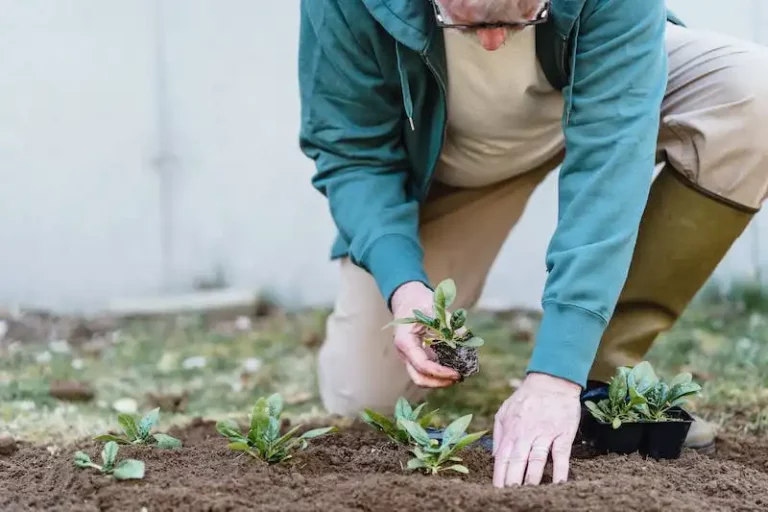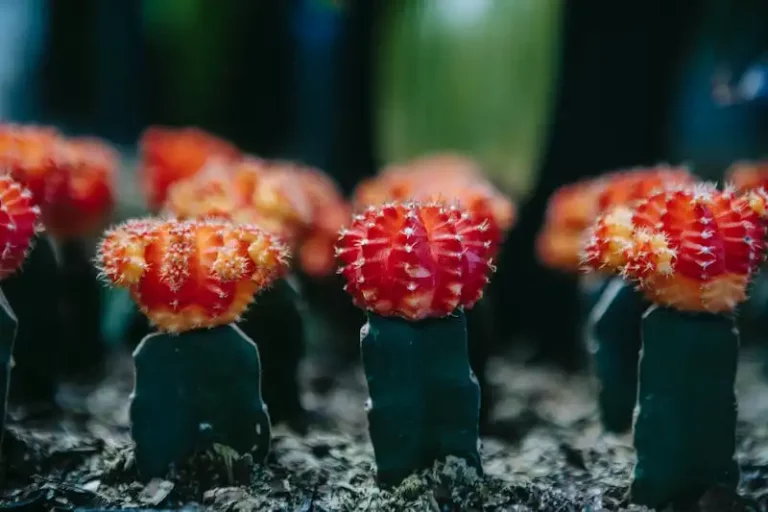String of hearts, also known as Ceropegia woodii or Rapunzel, is a popular trailing plant that has delicate heart-shaped leaves and beautiful cascading vines. It is a member of the Ceropegia genus, which is native to southern Africa. String of hearts is a great addition to any indoor or outdoor space and is relatively easy to care for.
When it comes to growing string of hearts, one of the most important factors to consider is the climatic conditions. It thrives in bright, indirect light and does well in temperatures between 60-80°F (15-27°C). During the summer months, you can move your plant outdoors to give it some fresh air and natural sunlight.
As for watering, string of hearts has specific needs. Overwatering can lead to root rot, so it’s important to allow the top inch of soil to dry out before watering again. Underwatering can cause the leaves to shrivel, so be sure to give it a good drink when the soil is dry. Additionally, string of hearts prefers higher humidity, so it’s a good idea to place a tray of water near the plant or use a humidifier.
When it comes to fertilizing string of hearts, it is generally a low-maintenance plant and does not require frequent feeding. However, you can use a balanced liquid fertilizer diluted to half strength during the growing season (spring and summer) to give it an extra boost. Be sure to follow the instructions on the package for the best results.
One of the great things about string of hearts is that it is nontoxic to humans and pets, making it a safe choice for households with children and animals. However, it’s always a good idea to keep an eye on your pets to ensure they don’t chew on the leaves or vines.
If you’re buying a string of hearts plant, there are a few things to keep in mind. Look for a plant with healthy foliage and vibrant green leaves. Avoid plants with yellowing or browning leaves, as this may be a sign of overwatering or other problems. You can also consider buying string of hearts online from reputable sellers like Amazon or plant specialty stores like Hirts or Olivias.
When it comes to propagating string of hearts, there are a few different methods you can try. One popular method is to take stem cuttings and place them in water or directly into moist soil. Another method is to remove leaves from the vines and stick them directly into the soil. Both methods have a good success rate, so choose the one that works best for you.
Repotting string of hearts is not often necessary, as it prefers to remain slightly root-bound. However, if your plant has outgrown its current pot or the soil has become depleted, you can repot it into a slightly larger container with fresh compost. Be sure to use a well-draining soil mix to prevent overwatering.
String of hearts is a relatively pest-free plant, but like any houseplant, it can attract pests. If you notice any issues with pests, such as mealybugs or spider mites, you can try to remove them by gently wiping the affected areas with a damp cloth or by using an organic pest control method.
In conclusion, growing and caring for string of hearts is a rewarding experience. With its attractive foliage and cascading vines, it is sure to bring beauty to any space. By properly managing watering, temperature, and light conditions, as well as providing occasional fertilizing and propagation as needed, you can enjoy a healthy and thriving string of hearts plant.
About String of Hearts
String of Hearts, also known by its scientific name Ceropegia woodii, is a popular houseplant that belongs to the Asclepiadaceae family. Its unique trailing vines and heart-shaped leaves make it a favorite among plant enthusiasts. Originally from South Africa, String of Hearts is well adapted to a dry and climatic environment.
As the name suggests, the leaves of this plant resemble hearts, and they are usually small in size. The leaves grow in pairs along the cascading stems, creating a beautiful and delicate look. The leaves are green with shades of silver and purple, adding to the overall aesthetic appeal of the plant.
String of Hearts is a low-maintenance plant, making it perfect for busy individuals or those new to gardening. It requires minimal care to remain healthy. One important aspect of its care is to avoid overwatering. The tubers on the stems store water, so the plant can survive without regular watering. In fact, overwatering can lead to root rot and the plant’s demise.
This plant prefers bright, indirect light and does well in a variety of settings, including offices and living rooms. It also thrives in high humidity environments, such as bathrooms or kitchens. String of Hearts can be placed on a windowsill or hung in a hanging planter to let its vines cascade down. It can grow up to 4 feet long or longer if given the opportunity.
String of Hearts can be propagated easily through stem cuttings or by rooting the tubers. By using stem cuttings, you can create new plants that have the same characteristics as the parent plant. Layering is another method that works well for propagating String of Hearts.
When it comes to buying String of Hearts, you have a range of options. You can purchase potted plants from local nurseries or order them online. String of Hearts is also commonly sold as a hanging basket plant. Make sure to choose plants with healthy and full vines, as wilting or yellowing leaves may be a sign of poor health.
In terms of upkeep, String of Hearts does not require much attention. As long as it has the right conditions and is not overwatered, it will continue to grow and thrive. Regularly check the soil moisture, and water only when the top inch of the soil is dry. Fertilize the plant every month during the growing season of spring and summer, using a balanced houseplant fertilizer.
String of Hearts is generally a safe plant to have around children and dogs, as it is not toxic. However, caution should still be exercised, and if ingested, medical attention may be necessary. If you have pets or small children, consider placing the plant out of their reach or covering the pot to prevent any accidents.
The history of String of Hearts goes back several decades, and it has gained popularity over time due to its unique appearance and easy care. The plant is also known by other nicknames, such as Rapunzel and Hoya linearis. Its vining nature makes it an excellent addition to hanging baskets and shelves, where it can cascade down and create a stunning visual effect.
String of Hearts is a great choice for anyone looking to add a touch of greenery to their home or office. Its trailing vines and heart-shaped leaves make it a visually appealing plant, while its low-maintenance nature makes it perfect for busy individuals. So, whether you’re a seasoned plant enthusiast or just starting to learn about houseplants, String of Hearts is a great option to consider.
How to grow and care for string of hearts
The string of hearts (Ceropegia woodii) is a popular trailing plant characterized by its heart-shaped leaves and delicate vines. If you want to take care of this stunning plant, here is a comprehensive guide to help you along.
1. Planting
- String of hearts can be started from stem cuttings or tubers. They root quite easily in well-draining potting soil.
- Choose a pot with drainage holes to prevent waterlogged roots.
- Use a potting mix suitable for succulents or cacti, such as a mix of potting soil, perlite, and sand.
- Place the cuttings or tubers a few inches deep into the soil and press gently to secure them.
2. Watering
- The string of hearts is drought-tolerant and prefers to dry out between waterings.
- During the growing season (spring and summer), water thoroughly when the top inch of soil feels dry.
- In winter, reduce watering frequency as the plant goes dormant.
- Be cautious not to overwater, as this may lead to root rot.
3. Light
- The string of hearts thrives in bright but indirect light. It can tolerate some direct sunlight, but too much can scorch the leaves.
- Place the plant near a north or east-facing window for optimal light conditions.
- If growing indoors, make sure to rotate the plant every few weeks for even growth.
4. Fertilizing
- String of hearts does not require much fertilizing. However, you can apply a balanced houseplant fertilizer once a month during the growing season to promote healthy growth.
- Alternatively, you can use a succulent-specific fertilizer diluted to half the recommended strength.
5. Pruning
- Regular pruning is not necessary for the string of hearts. However, you can trim back any leggy or straggly vines to maintain a compact and tidy appearance.
- Prune with sharp, clean shears just above a leaf node to encourage new growth.
6. Repotting
- String of hearts only needs to be repotted when it becomes root-bound, which is usually every 2-3 years.
- Choose a slightly larger pot and use a well-draining potting mix.
- Gently remove the plant from its current pot, loosen the roots, and place it in the new pot.
- Fill around the roots with fresh soil, firming it gently.
7. Common problems and troubleshooting
- If your string of hearts is losing leaves, it may be a sign of overwatering or insufficient light.
- Aphids and mealybugs can occasionally infest the plant. Use a neem oil spray to manage these pests.
- Yellowing leaves can indicate underwatering or nutrient deficiency. Adjust your watering routine and consider fertilizing.
By following these tips, you can successfully grow and care for your string of hearts plant, creating a beautiful specimen for your home or garden.
How to grow string of hearts
String of hearts, also known as Ceropegia woodii, is a popular trailing succulent plant that is native to South Africa. It is named for its long, heart-shaped leaves that hang delicately on long, thin vines. If you’re interested in adding this beautiful plant to your collection, here are some tips on how to grow and care for string of hearts.
Propagation
If you already have a string of hearts plant, you can easily propagate it to grow more. One of the most common ways to propagate string of hearts is through stem cuttings. Simply cut a few inches of the stem below a node, remove the bottom leaves, and place the cutting in a small pot with well-draining soil. Water the cutting lightly and keep it in a warm, bright location. The cutting will develop roots over time and you will soon have a new plant.
Another option for propagation is to grow string of hearts from tubers. The small tubers can be removed from the main plant and planted in a separate pot. Keep in mind that tubers take longer to grow compared to stem cuttings, but they can result in a stronger and more branching plant.
Lighting and temperature
String of hearts prefers bright, indirect light. Place your plant in a location where it can receive plenty of bright, filtered light throughout the day. It can tolerate some direct sunlight, but too much can cause the leaves to burn.
When it comes to temperature, string of hearts is a bit more forgiving. It can tolerate a wide range of temperatures, but it prefers temperatures between 60-85°F (15-29°C). Avoid exposing the plant to extreme temperatures, as this can cause damage and make it more susceptible to diseases.
Watering and fertilizing
String of hearts prefers to be slightly underwatered. This means you should allow the soil to dry out between waterings. Overwatering can lead to root rot and other fungal issues, so it’s important to be cautious. Depending on the temperature and humidity levels in your home, you may only need to water your plant every 1-2 weeks.
When it comes to fertilizing, string of hearts does not require much. A general-purpose houseplant fertilizer can be used once a month during the growing season (spring and summer). Follow the instructions on the fertilizer packaging for the correct dosage.
Repotting and pruning
String of hearts does not require frequent repotting and can do well in a slightly crowded pot. Repotting should only be done when the current pot is too small or when the plant needs fresh soil. Use a well-draining soil mix, such as a cactus or succulent mix.
Pruning can help to maintain the shape of the plant and encourage more growth. You can trim back any long or leggy stems to promote branching. Additionally, any stems that are yellowing or looking unhealthy should be pruned to maintain the overall health of the plant.
Pets and children
String of hearts is considered to be a non-toxic plant, which means it is safe to have around pets and children. However, it’s always best to keep an eye on them and discourage any chewing or eating of the leaves or vines.
With proper care and attention, your string of hearts plant will thrive and become a beautiful addition to your indoor garden. Enjoy the delicate beauty of this trailing succulent!




